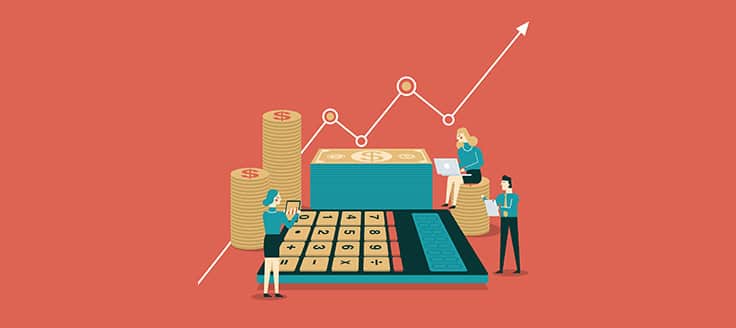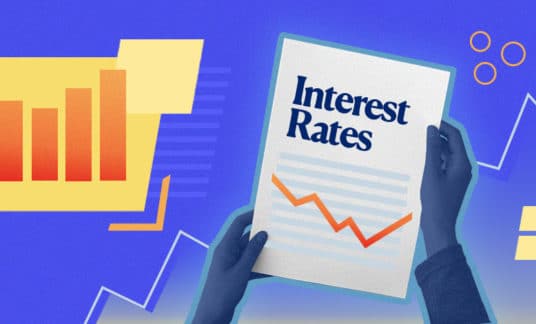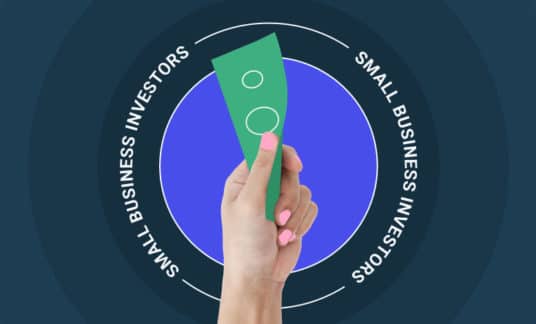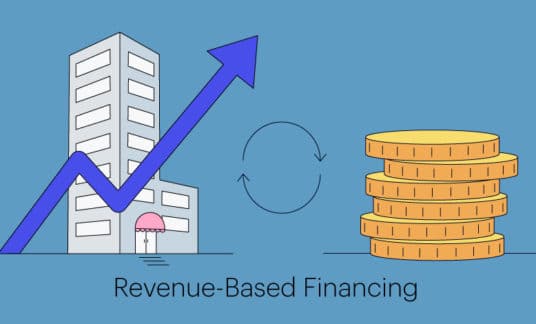Any time you’re operating a business where clients don’t have to pay-in-full for orders or services, you run the risk of delayed payments.
Unfortunately, just because you haven’t gotten paid doesn’t mean that all work can come to a halt. You still have orders to fulfill, employees to pay and rent payments to make. But that missing cash can have a crippling effect on your operations.
Invoice factoring can help. If you’re struggling to collect funds from clients and aren’t sure where to turn, keep reading to learn what invoice factoring is and how you can use it to make sure that it’s business as usual, even when it isn’t.
What Is Invoice Factoring?
Invoice factoring is a type of financing where a small business owner sells uncollected invoices—for a portion of their total value—to a factoring company.
Factoring isn’t a loan, and it’s different from submitting an unpaid bill to a collections agency. When you sell an invoice, the factoring company gives you 80% to 90% of the money that you’re owed right away. When the client pays the invoice, the invoice factoring company collects the money, deducts their fees and issues a rebate back to the borrower. Typically, this happens within 30-90 days.
You get the money that you need to keep your business running, and the invoice factoring company earns a fee based on the amount that they paid you and the length of time it takes for the invoice to be paid.
How Do Invoice Factoring and Invoice Financing Differ?
While they sound similar, invoice factoring and invoice financing are different types of financing.
When a small business uses invoice financing, rather than selling an unpaid invoice to a factoring company, the business takes out an advance against their outstanding receivables. In other words, they’re using those invoices as collateral.
If you use invoice financing, you still own the customer relationship. You will receive a lump sum advance but remain responsible for collecting your unpaid invoices from clients. You will then pay back your advance (plus fees) once your client pays.
In many cases, processing fees for invoice financing are lower than invoice factoring, averaging 1%-3% a month, rather than 2%-5%.
How Small Business Invoice Factoring Works
Factoring invoices is useful when a business has unpaid invoices and requires capital sooner than later.
Many businesses have several invoices that they are waiting for payment on, which means the first thing they’ll need to do is decide which invoices they would like to sell to a factoring company.
In the eyes of invoice factoring services, not all invoices are created equal. These companies won’t buy an invoice that they don’t think is likely to be paid-in-full and promptly.

What to Consider When Choosing an Invoice to Factor
There are several things to consider when deciding whether to factor an invoice.
- The age of the invoice: Newer invoices are usually viewed as more valuable because the chances that it will be paid are higher. If an invoice is less than 30 days old, it will be easier for you to sell it to an invoice factoring company.
- The financial state of the client who owes the invoice: A larger company with lots of funds will be more likely to have the money on hand to pay their invoice, while a smaller company might struggle.
- The size of the outstanding bill: Smaller invoices are easier for clients to pay, increasing the chances that the factoring company will be able to collect the debt.
Choosing an invoice that falls into 1 or more of these 3 categories can help you increase the likelihood that a factoring company will decide to purchase your invoice and give you the cash advance.
What Happens When You Sell an Unpaid Invoice to a Factoring Company
Once you’ve chosen your invoice and the factoring company has accepted it, it’s time to get your money.
Typically when you factor an invoice, the factoring company will first pay you a portion of the total bill due — typically 80%-90%. The factoring company then holds the remaining balance until your client pays the invoice.
After they’ve paid your advance, the factoring company will then notify your client that your invoice has been assigned to them, so the client should pay them directly instead of paying you.
While the factoring company waits for your client to pay their invoice, fees are accruing on your advance — 2%-5% a month is typical.
Once your client settles their invoice, the factoring company will calculate the total fees owed on your advance, and forward any remaining funds on to you.
-
Invoice Factoring vs. Invoice Financing Example
Let’s say you’re a wholesaler, and you’ve provided $8,000 worth of merchandise to a retailer. You invoice the client with net 30-day terms, but you need access to the capital immediately to take advantage of a steep materials discount from your vendor.
In the case of invoice factoring, you would sell the invoice your client owes to a factoring company. The factor would then follow up with your customer to collect payment on the invoice. When your customer pays, they remit payment directly to the factor. The factor then issues you a rebate for the reserved balance, minus fees.
If you decided to use invoice financing instead, then you, not the factor, would follow up with the customer for payment. Your customer would remit payment to you, and you, in turn, would use the proceeds to pay off your advance from your lender.
Why Business Invoice Factoring Might Be the Right Choice
There are plenty of reasons why you might find your business short on cash at the end of the month or during certain parts of the year.
You might experience a drop in sales, either occurring suddenly or as a result of your typical slow season. You could encounter an unexpected expense or emergency that puts a strain on your bottom line. Perhaps even more frustrating than finding yourself short on cash is knowing that you still have clients who owe you money.
Unfortunately, this can put you in a bit of a sticky situation. Unless the debt has gone for months unpaid, pressing your clients for payment might not be the best choice.
You might be able to take out a small business loan or a personal loan. But, this method can take time, and you may need to put up some form of collateral. If you fail to pay back your loan, your credit score will take a hit and you may lose your collateral.
Invoice factoring can help you get the money you need as quickly as the same day. While you do still have to pay fees, you are not the one responsible for paying back the invoice factoring company — the client is.

The Pros and Cons of Small Business Invoice Factoring
Pros
- Access to funds as soon as the same day
- Borrow only against the invoices you want to factor
- The invoice financing company assumes responsibility for collecting the invoice
- Many factoring companies have online platforms to track payments on individual invoices
- Financing can be renewed quickly and easily
Cons
- You only get 80% – 90% of the face value of your invoice(s) upfront
- Fees on borrowed funds are high — typically 2% – 5% per month
- You can’t control how much you’re charged in fees because you don’t know when your client will pay their invoice
- Many factoring companies charge additional fees for things like returned checks and wire transfers
The Bottom Line on Business Invoice Factoring
Business expenses add up whether your clients pay their invoices on time or not. Invoice factoring isn’t cheap, but if you need cash quickly for things such as payroll or materials, quick invoice factoring can be an easy way to get the money you need, when you need it.










